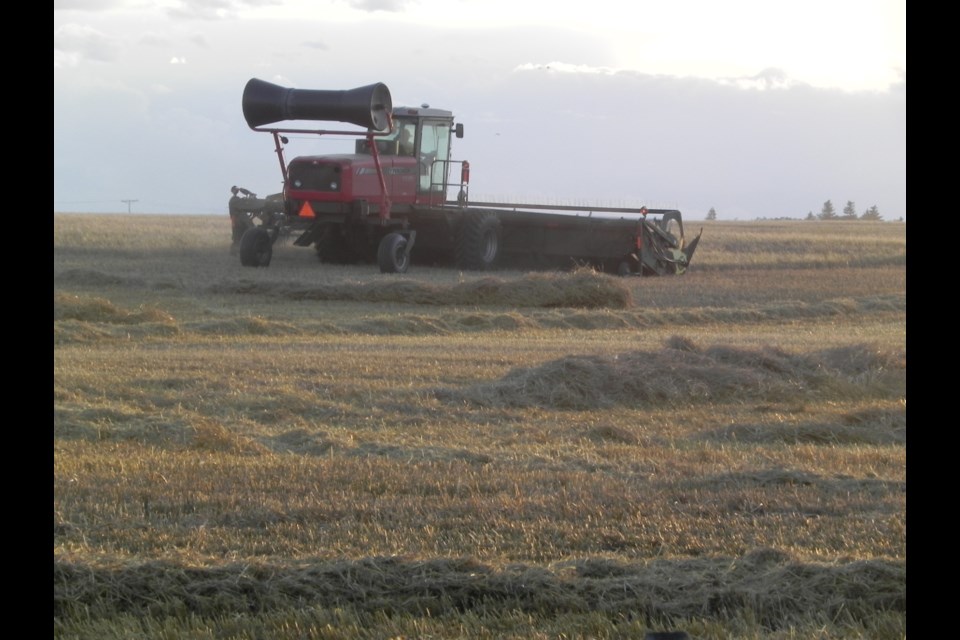UNITY - In a Sept. 26 Tyson Barrow story on CTV Saskatoon online, the title “Worst crop since ‘88” sums up this year’s harvest.
Alyssa Mistelbacher, Market Analyst, FarmLink, tells the Press Herald, “For the most part, harvest has finished, other than a few last remaining flax and canola fields. Fall field work has now started."
"All crop yields were obviously negatively impacted by the drought. Wheat saw variable yields in the region, ranging from 15 to 25 bu/acre on average. A hailstorm ran through the areas of Major/Luseland and further reduced outcomes for that area. As far as grading – bushel weight on spring wheat has been decent and the bulk of the crop is grading well (#1 and #2 CWRS). Spring wheat protein is high, coming in at 15 per cent or higher in most cases. There are few reports of low protein.
"Canola crops, overall, overall disappointing with yields coming in the range of 10 to 15 bu/acre. The Luseland/Wilkie area saw marginally better yields at up to 20 bu/acre.
"Barley crops have been coming off light weight, and with high protein. Anything that came in after the small bouts of rainfall is chitted. Very little barley in the region is malt quality.
"Durum crops averaged around 20 bu/acre. The early harvested portion of the crop is grading well with high HVK but the later harvested portion is showing lower test weight and lower HVK. The grade breakdown of durum would be 60 per cent No. 1 CWAD and 25 per cent No. 2 CWAD and the remaining would be grading No. 3 or lower for the region.
"Pea and lentil quality was decent (majority grading No. 2 or better) in the region but yields suffered. Lentils ran anywhere from 12 to 17 bu/acre, while peas averaged around 20 bu/acre.
"Both topsoil moisture and subsoil moisture are still lacking. The area is in need of moisture before next season.”
Producer Iain Keller states, “Horrid from Handel.”
Keller adds, “Going into the crop year I felt excited lots of drive/energy, maybe not as much as Dan Feser but close. It was dry but [the] crop had a great start with a billion-dollar rain just as seeding wrapped up. Through June we caught a few showers and life was looking sweet.”
As Keller says, “Then July hit. We lost the crop in first two weeks of July. Waiting for harvest after this was as exciting as waiting for your turn on the electric chair. Harvest began early- to mid-August and shortly after so did some beautiful rain. All that torched canola now had all the energy in the world to flower and attempt to regrow amongst the burnt remains. And have I mentioned weeds? They loved a good rain with very little crop competition. “
Keller said he has been farming for 25 years and this year was not easy to take. He adds, “I’ve heard it said before that 'Good farmers don't need rain.' Well, anyone who says that I hope gets the opportunity to try it out.”
“No, but seriously, farming is in my blood I love it and what the heck, we all know that smooth sailing makes a crappy sailor. God and Mother Nature willing there will be a big crop next year.”




